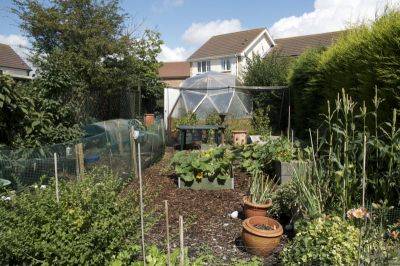Buy Alternative Kitchen Garden from Amazon.co.uk Buy Alternative Kitchen Garden from Amazon.com Buy Alternative Kitchen Garden from the Book Depository
What Were the First Seeds in Space? GotG4
21.08.2023 - 11:43 / theunconventionalgardener.com / Emma Doughty / Join Emma
Join Emma the Space Gardener as she explores gardening on Earth… and beyond! In this episode, Emma takes the time machine for a spin to explore the early history of seeds in space. Plus you’ll find out which plants will be best for terraforming Mars, why greenhouses may soon be made from solar panels, what’s included in a Russian space tourist package and more!
It’s going to take some tough plants to terraform Mars. Geography professor Eric Vaz has been working on a way to tell which regions of Earth are most like Mars, and which vegetation has the best chance of thriving on the red planet.How to leave Earth 101: Take good plants. Ryerson Today, May 2020Mars Terraforming: A Geographic Information Systems Framework. Life Sciences in Space Research, February 2020
Farmers on Earth may benefit from agrivoltaics – combining crops and solar panels. Tinted solar panels produce better basil—and more electricity. Anthropocene. August 2020.Tinted Semi‐Transparent Solar Panels Allow Concurrent Production of Crops and Electricity on the Same Cropland.
Do cosmonauts eat dill to reduce farting? We may never know for sure.The politics of the spice rack: Russia’s love of dill Alys Fowler’s A Modern Herbal* Scott Kelly’s Endurance: A Year in Space, A Lifetime of Discovery*Academic Busts UK Media Claim That Russian Cosmonauts are Obsessed With Dill. Sputnik News, Sep 2020
The Japanese mission blasting seeds into space this autumn will be taking Australian wattle seeds. Seeds in Space: What’ll Happen to the Wattle?
Contemplating becoming a space tourist? Find out what the Russian package offers. Russia Offers Space Tourists Purchase Of Soyuz Reentry Capsule Upon Return To Earth. UrduPoint, Sep 2020This is why Soviet cosmonauts carried a shotgun
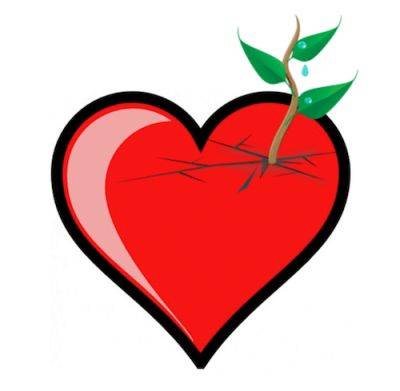
The garden in September
The garden and I have not spent much time together this summer. I’ve been busy… there was weather… there have been too many days when I didn’t feel like going outside. Since the courgette and summer squash started fruiting, I’ve been a bit afraid to go outside in case there’s a mountain of fruit to pick. But the light was nice this morning, so I ventured outside to take a few photos (and the squashes seem to be slowing down, so it’s safe).

The Peat-Free Diet: Peat-free seed composts
An ideal seed compost is able to retain water, whilst at the same time letting excess water drain away to provide an environment that is damp but not waterlogged. It allows penetration of plant roots and is able to anchor plants, but has space for air. Its texture is consistent, and it is free from pests, diseases and weeds that would compete with the seedlings. As we have seen, it doesn’t need to contain many nutrients if seedlings are going to be pricked out; seedlings growing in modules will either need enough nutrients in the compost to support them through their first weeks of life, or suitable supplementary feeding.

On the Shelf: Nature’s Wild Harvest
Every month this year I’ve been trying to read one of the unread books on my shelf, and to then decide whether it gets to keep its spot or needs to be set free to find a new home. For June I chose Nature’s Wild Harvest by Eric Soothill and Michael J. Thomas. It was published in 1983, and has been sitting on my bookshelf for three years, since I bought it in our local secondhand bookshop (which only opens on Wednesdays).

The Lady Garden
The Body Shop has announced that it is creating its first show garden at RHS Chelsea this year. It’s called The Lady Garden, designed to pay homage to its “founding feminist principles and activist roots”.
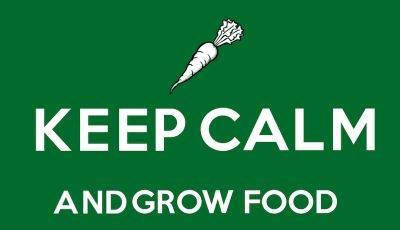
Nasturtiums: the taste test
Towards the end of June, I received some seeds from Dobies to trial. I chose varieties that could be sown later in the year, but at the point at which they arrived I didn’t have a garden. The paving was finished, but the raised beds weren’t yet built. I chose to sow only the nasturtiums – Princess of India and Alaska.

The grass beneath our feet
The English obsession with grass came into being in the 17th century, when the close cut lawn was a status symbol of the rich. Only they could afford to take land out of production for purely aesthetic purposes, and maintaining a lawn before the invention of the mower was a highly skilled and labour-intensive process. The middle classes started growing lawns from the 1860s onwards, and the Victorian popularity for outdoor sports led to their proliferation. Grass species from the Old World were taken to America during this period, and the lawn took there over in the early 20th century. In 2005, NASA published research suggesting that lawns (including residential and commercial lawns and golf courses) were the single largest irrigated ‘crop’ in America, covering about 128,000 square kilometres. In 2013 there were upwards of 15 millions lawns in Britain, costing us £54 million in fertilisers and £127 million on lawn mowers.

Hands-on gardening on the ISS
If you’re currently tending lettuce plants, then you have something in common with the crew on board the International Space Station (ISS). They’re testing NASA’s new Vegetable Production System – affectionately known as ‘Veggie’. At 11.5 inches by 14.5 inches, Veggie is the largest plant growth chamber to have been blasted into space, and was developed by Orbital Technologies Corp.

The Millennium Seed Bank – arrivals
It’s nearly two years since I started the Alternative Kitchen Garden Seed Appeal, with the aim of raising enough money to help the Millennium Seed Bank save a species. We still have a way to go to reach the target ;(

First Briton in Space
While we’re waiting for Tim Peake to blast off to the International Space Station (ISS) to begin his Principia mission, I thought it might be fun to have a look at the first Briton in space – Helen Sharman, who was also the first woman to visit the Mir space station, in 1991.
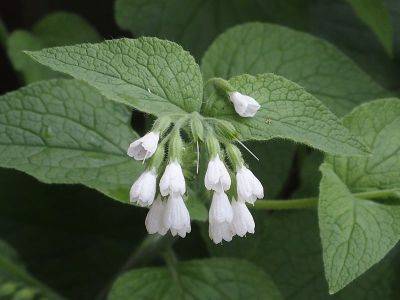
My first comfrey harvest
This is what the wild, self-seeded comfrey plant outside my front door looked like last week. It doesn’t look like that now, though, because I have cut it back and put the leaves to rot in one of my comfrey buckets (they have lids and taps). First, though, I had to empty out the last lot of comfrey liquid. I can’t remember when I made it – I don’t think it was last year, I think it must have been before that – and I harvested 3 litres of comfrey liquid from my pair of bucket. That’s certainly enough to keep my tomatoes and peppers happy this year!
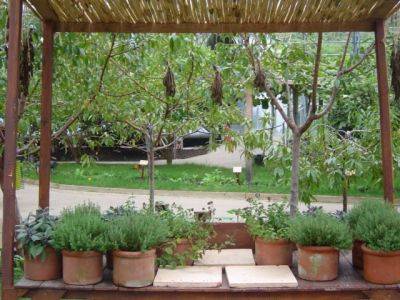
What would a resilient UK garden look like?
A little while ago I was talking about the recent extended period in my life when, for a variety of reasons, I was unable to garden. As it happens, I have been reading The Resilient Gardener, by Carol Deppe, which is subtitled “Food production and self-reliance in uncertain times”.
